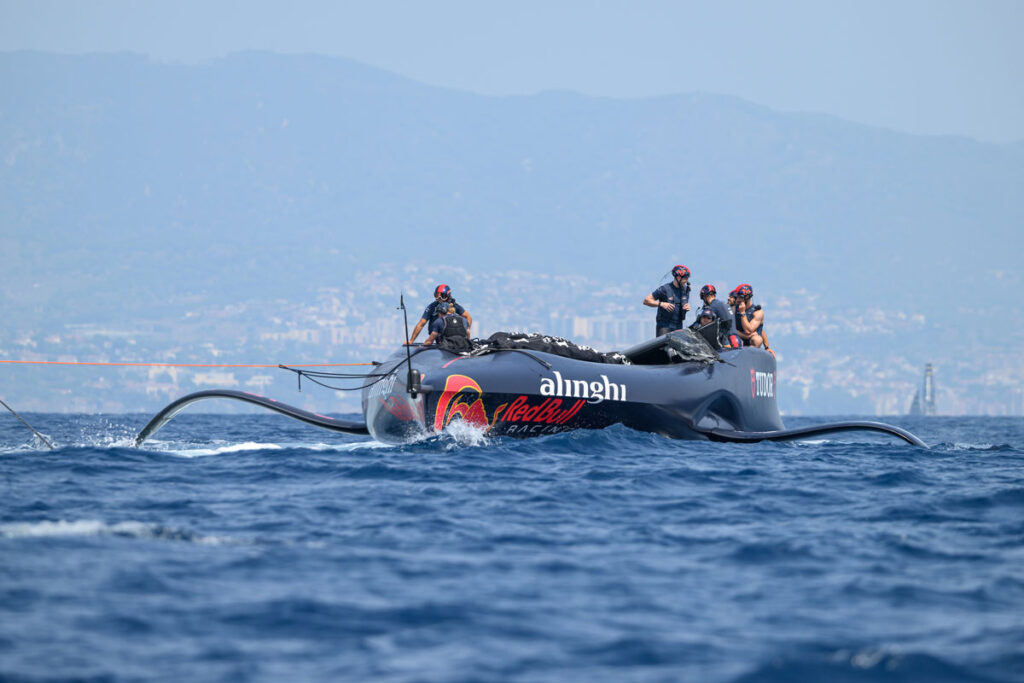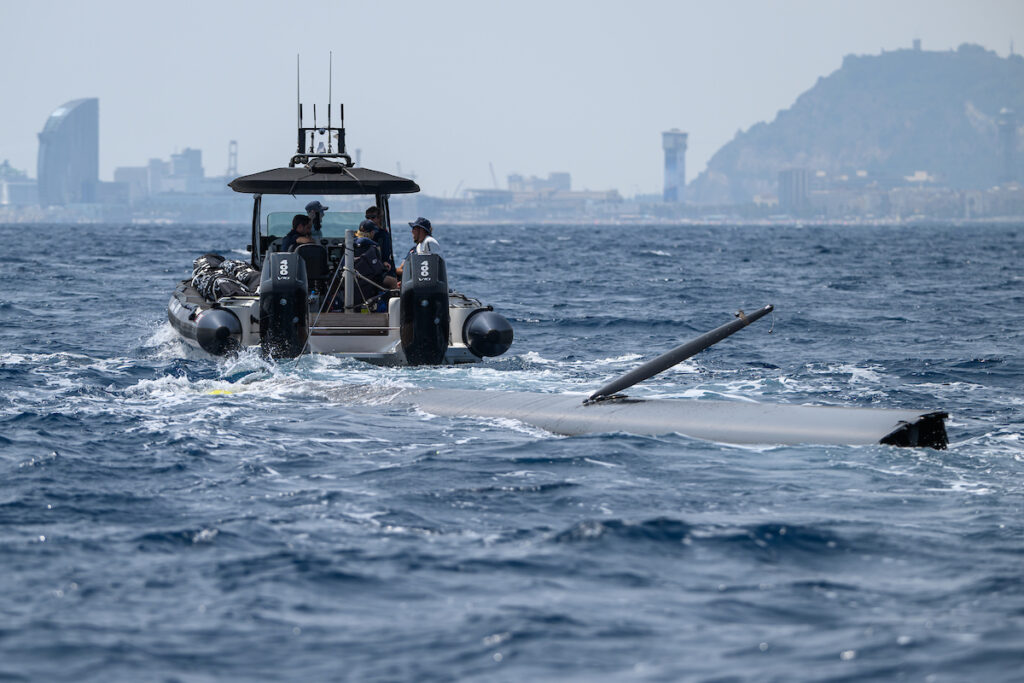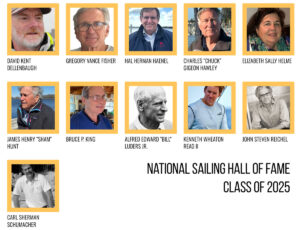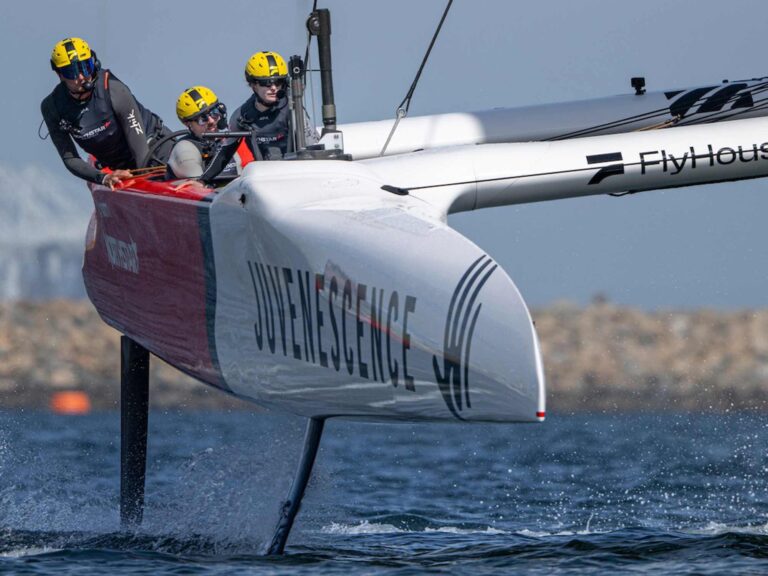
Alinghi Red Bull Racing, Swiss challenger for the Louis Vuitton 37th America’s Cup, suffered its second AC75 mast failure on Tuesday, August 20, in Barcelona, during a training session ahead of the final Preliminary Regatta set to start on Thursday. Silvio Arrivabene, a general manager with the team reported that all crewmembers were safe and that the team “remains fully focused on racing.”
According to former AC Recon personnel and Sailing World contributor, Justin Busuttil, on site in Barcelona’s Port Vell, the mast that collapsed today in moderate conditions and benign sea state is the team’s newest spar, and it was its first day of usage on the water and under real sailing loads.
Alinghi Red Bull Racing’s previous mast failure occurred in June in Barcelona while the team was training at the higher end of the wind range. That spar, also a new-generation mast tube, broke into several pieces during a high-speed bear-away. At the time, Arrivabene shrugged off the incident and said, “that’s why we have spares.”
Days later, Alinghi’s BoatOne was back on the water with its spare “legacy” mast that it had procured when the team purchased the 36th America’s Cup-winning AC75 of Emirates Team New Zealand. According to Busutill, the team has continued to train with the legacy mast since June.

The carbon D-shaped mast tube for the AC75 fleet is listed as a supplied part, or “stock component,” in the AC75 Technical Regulations, which specify that the stock mast tube “excludes any attached components such as luff tracks, mainsail support structures and control systems as well as taping or local reinforcements for the connection of such components.”
The root cause of the first failure has not been publicly shared by the team, but it is well understood that the absence of backstay on the current generation AC75s, distribution of the sail loading is an ongoing technical concern and significant design challenge.
“The events that occurred today were definitely surprising, particularly given the mild conditions,” the team said in a statement. “No signs of overload were observed on the mast, which was newly acquired and had been in use for just 20 minutes. This one-design mast replaced the previous one, which had been in place for only a few hours before failing. Each failure occurred in a very similar manner, and on both occasions, all load sensors indicated that the stress levels were well within acceptable limits. To be in this situation again certainly raises some legitimate questions with regard to what happened to the masts’ structural integrity. It’s a matter that needs to be looked at very closely, but for now, we’re leaving the investigation to the experts.”

The AC75 Technical Regulations specify the number of masts a team can build or modify, as they do for sails and certain foil components, and the regulations allow one legacy mast, with restrictions on modifications, and two new mast tubes. Mast tubes can be repaired (as Alinghi’s first tube is believed to be) as long as they retain predetermined materials, bend and weight parameters.









